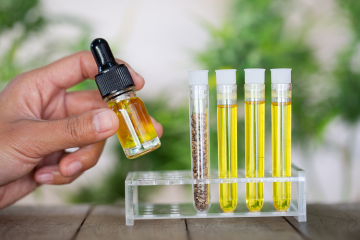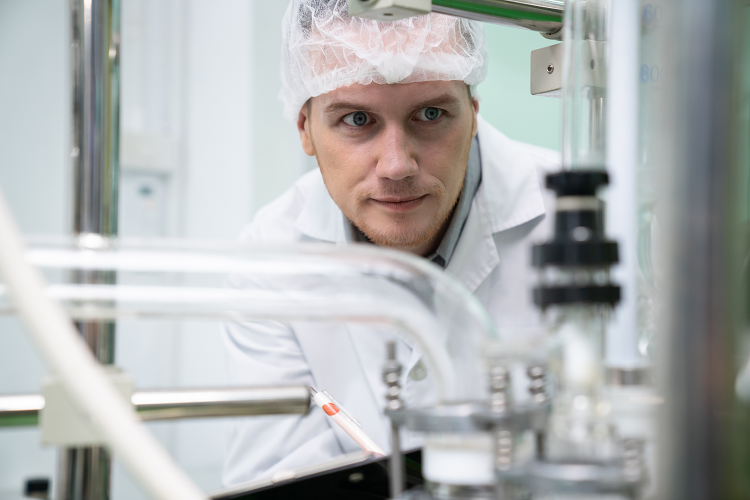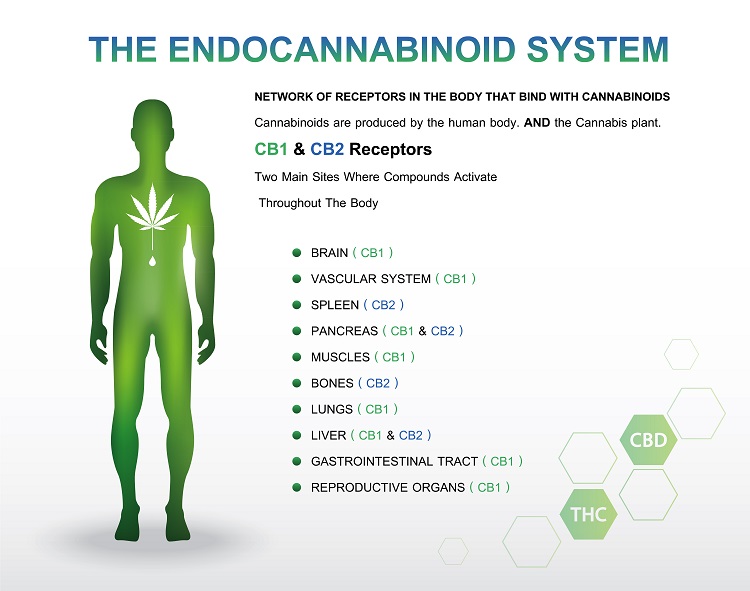Find out what cannabinoid CB9 is and what it does! Comparison with other cannabinoids

- What is CB9?
- Characteristic features of CB9
- Does CB9 have psychoactive effects?
- How do cannabinoids interact with the endocannabinoid system?
- Table: Comparison of CB9 vs. H4CBD vs. HHC vs. THCP
- The pitfalls of CB9
- Conclusion: looking to the future
What is CB9?
CB9 is a natural cannabinoid found in the cannabis plant. It is a derivative of cannabidiol (CBD). It is linked to CBD by its natural 5-carbon tail and similar chemical structure. Although the structure is similar, there is a slight difference that causes CB9 to have psychoactive properties, as opposed to CBD, which is not psychoactive.
The explanation is quite simple, as it has already been established that even a small change in chemical structure causes the effects of cannabinoids to be different. That is why CB9 has a psychoactive effect on the body.
The cannabinoid CB9 is produced by a complex chemical reaction in the cannabis plant, with other cannabinoids such as CBD and THC acting as precursors (starting materials). Research is currently underway to discover exactly how CB9 is produced.
Characteristic features of CB9
A rather interesting property of CB9 is that it does not tend to crystallize like some other cannabinoids. This physical property is likely to be reflected in the way it is processed and stored, affecting its composition in products, stability, solubility and method of use.
As we have already discussed above, CB9 has psychoactive properties, although it has a similar structure to CBD and H4CBD. We already know that the psychoactive nature of CB9 stems from the variation it has in structural arrangement. However, extensive scientific analysis, better detection methods and careful consideration of regulation will be needed to explore the unique properties of CB9. More on this later.

Does CB9 have psychoactive effects?
To better understand how CB9 affects the body, let's compare its effects with other cannabinoids. If we consider the effects of THC (tetrahydrocannabinol, also known as delta-9), which is characterised by intense intoxication and altered perception, CB9 has a mild psychoactive effect.
The psychoactive effects of CB9 are most similar to those of HHC (hexahydrocannabinol) and delta-8-THC, a psychoactive cannabinoid with similar effects to delta-9 but with low affinity for the CB1 receptor.
It is to be expected that it raises:
- Euphoria
- relaxation
- slightly altered sensory perception
Although CB9 research is still at the starting line, the current information available suggests that it has considerable therapeutic potential. If it exhibits similar properties to other cannabinoids, particularly anti-inflammatory, sedative and neuroprotective, its use appears particularly useful in:
- promoting overall well-being (relief from stress and anxiety)
- chronic pain and inflammation
- promoting sleep
- neurodegenerative diseases
How do cannabinoids interact with the endocannabinoid system?
How cannabinoids affect us is related to how they interact with the endocannabinoid system in our body. We can think of the ECS as a complex intricate network that makes sure our body is in balance. This includes important activities such as sleep, mood, pain perception, movement coordination, appetite and immunity.
This network is made up of endocannabinoid receptors, the best known being CB1 (found in the central nervous system, in the brain) and CB2 (mainly in the immune system, digestive tract and other organs), endocannabinoids and enzymes. Taking the example of non-psychoactive CBD, it is known that it does not bind to CB1 and CB2 receptors, but has the ability to modulate their activity and to affect other receptors (adenosine, serotonin and vanilloid). In contrast, the cannabinoid THCP directly activates both CB1 and CB2 receptors.
For the hydrogenated compounds H4CBD and HHC, the composition of 2 different stereoisomers, namely the molecule, is decisive:
- (9R) - active molecule
- (9S) - inactive compound
The (9R) molecule binds very effectively to CB1 receptors, producing a psychoactive effect, whereas (9S) earns the designation of inactive component. The potency of the product therefore depends on the ratio of these molecules, with a 1:1 ratio commonly offered in practice, or the (9R) molecule dominating.
Currently, scientists are trying to figure out how CB9 interacts with ECS. Due to a unique structural modification, the interaction is thought to occur in a different way.

Table: Comparison of CB9 vs. H4CBD vs. HHC vs. THCP
|
|
CB9 |
|||
|
Chemical formula |
C17H20N2O6S |
C21H34O2 |
C21H32O2 |
C23H34O2 |
|
Occurrence in cannabis |
Yes |
No |
Yes, only in meagre quantities. |
Yes, only in meagre quantities. |
|
The emergence of |
The CBD derivative is produced by a laborious chemical process in the cannabis plant in which other cannabinoids, such as THC and CBD, serve as precursors. |
CBD derivative, produced by hydrogenation, 4 hydrogen atoms are added to the CBD molecule. |
It is produced by hydrogenation mostly from CBD, possibly from terpenes (citronellal or olivetol). |
It is obtained in the laboratory through more complex chemical processes.
|
|
Psychoactive properties |
Yes |
Available |
Yes |
Yes |
|
Cooperation with ECS |
Probably different action with the ECS of the human body. The cooperation of CB9 with the ECS remains a subject of research. |
Molecule (9R)- H4CBD: apparently high affinity for CB1 receptors. |
Molecule (9R)-HHC: probably high affinity for the CB1 receptor (but lower than THC) and low binding to the CB2 receptor. |
It activates CB1 and CB2 receptors. |
|
Effects |
Milder effects than THC, similar to those of HHC and delta-8-THC. |
Similar to CBD, but with a more pronounced intensity.
|
|
|
|
Therapeutic potential |
|
|
|
|
|
Legality |
Legal status not determined, currently legal in the Czech Republic. |
Legal |
Added to the list of banned substances in the Czech Republic as of 1 March 2024. |
Added to the list of banned substances in the Czech Republic as of 1 March 2024. |
|
Products |
Limited supply at the moment.
|
|
|
|
The pitfalls of CB9
The difference in the chemical structure of this cannabinoid brings several complications that will confuse not only scientists, but also manufacturers and regulators. The first difficulty arises with detection, as CB9 is much more difficult to find than other cannabinoids. In fact, tests cannot 'spot' it as well, or conventional HPLC (high performance liquid chromatography) analytical methods may not be sufficient for reliable detection.
In practice, we know that difficult detection is a problem for both regulators and manufacturers who have to ensure the quality and purity of their products.
The psychoactive properties can be another sticking point, which can put CB9 in what is known as a legal grey area. This means that in markets where CBD is legal but other psychoactive substances (THC) are illegal, CB9 could pose a legal complication.
Future research will have a major impact on its potential use and will answer the legal and practical questions it currently raises.
Conclusion: looking to the future
The natural cannabinoid CB9 is derived from CBD and has mild psychoactive properties. It is likely to revolutionise the cannabis industry, especially in Europe where many countries have already restricted or are restricting the use of cannabinoids with psychoactive effects such as HHC, HHC-P and THCP. CB9 thus represents a promising and legal alternative.
However, to get to the bottom of it and learn about the potential benefits of CB9, we need to wait for clinical trials to tell us more about its efficacy, safety and how it is used.
CB9 spirits, flowers, gummies and CB9 vapes are already appearing on foreign e-shops. It is reported that CB9 offers a better vaping experience without causing a "harsh feeling" in the throat, as is the case with H4CBD. Better tolerability when vaping could thus shoot this cannabinoid up in the popularity rankings among users. But we have little information so far, so we can only wait for more findings on CB9.
Original text: Patricie Mikolášová, translation by AI
Photo: Shutterstock
"All information provided on this website, as well as the information provided through this website, is for educational purposes only. None of the information contained herein is intended as a substitute for medical diagnosis and such information is not to be considered medical advice or recommended treatment. This website does not promote, endorse or advocate the legal or illegal use of narcotic drugs or psychotropic substances or the commission of any other illegal activity. Please see our Disclaimer for further information.“
